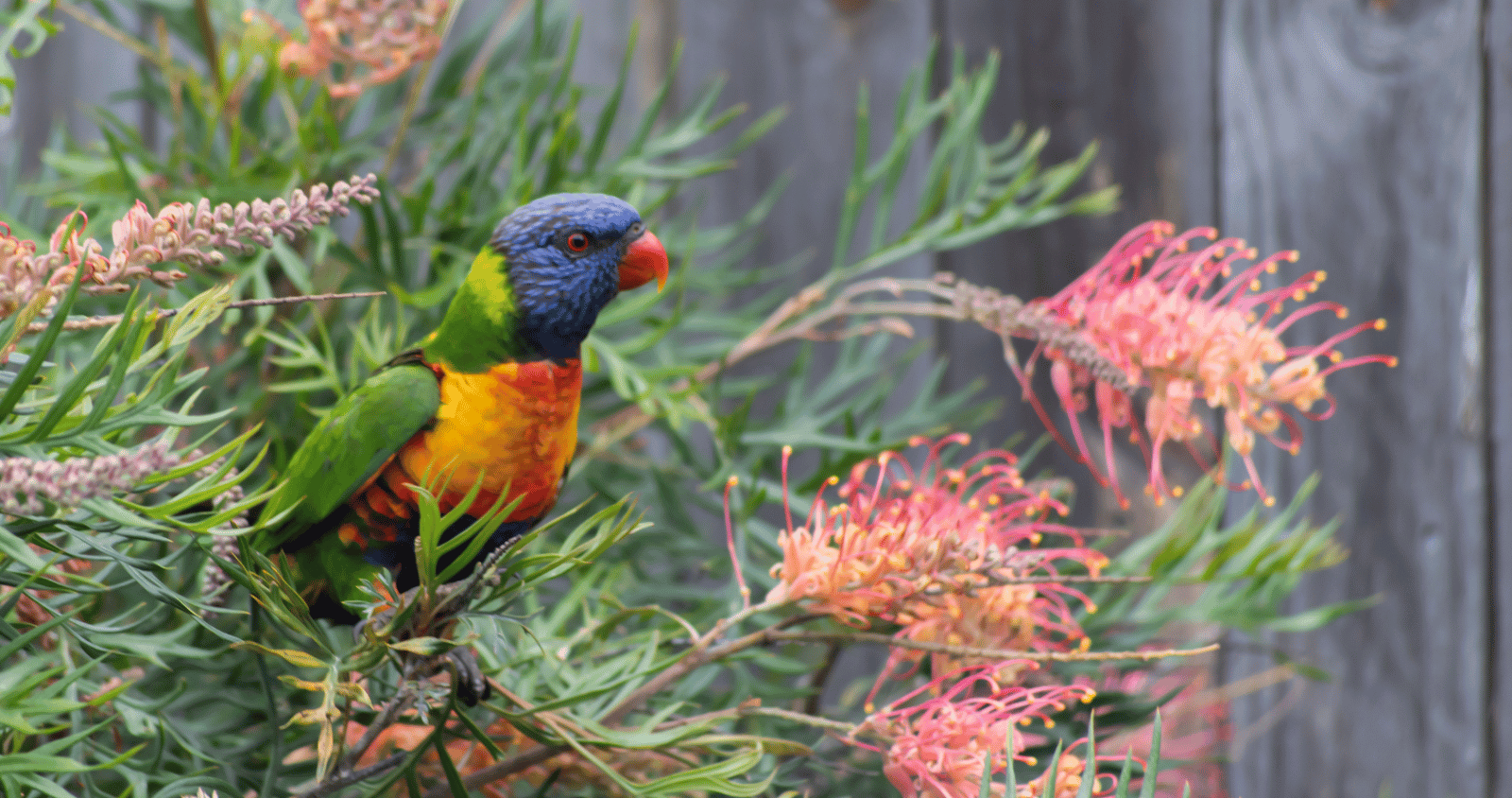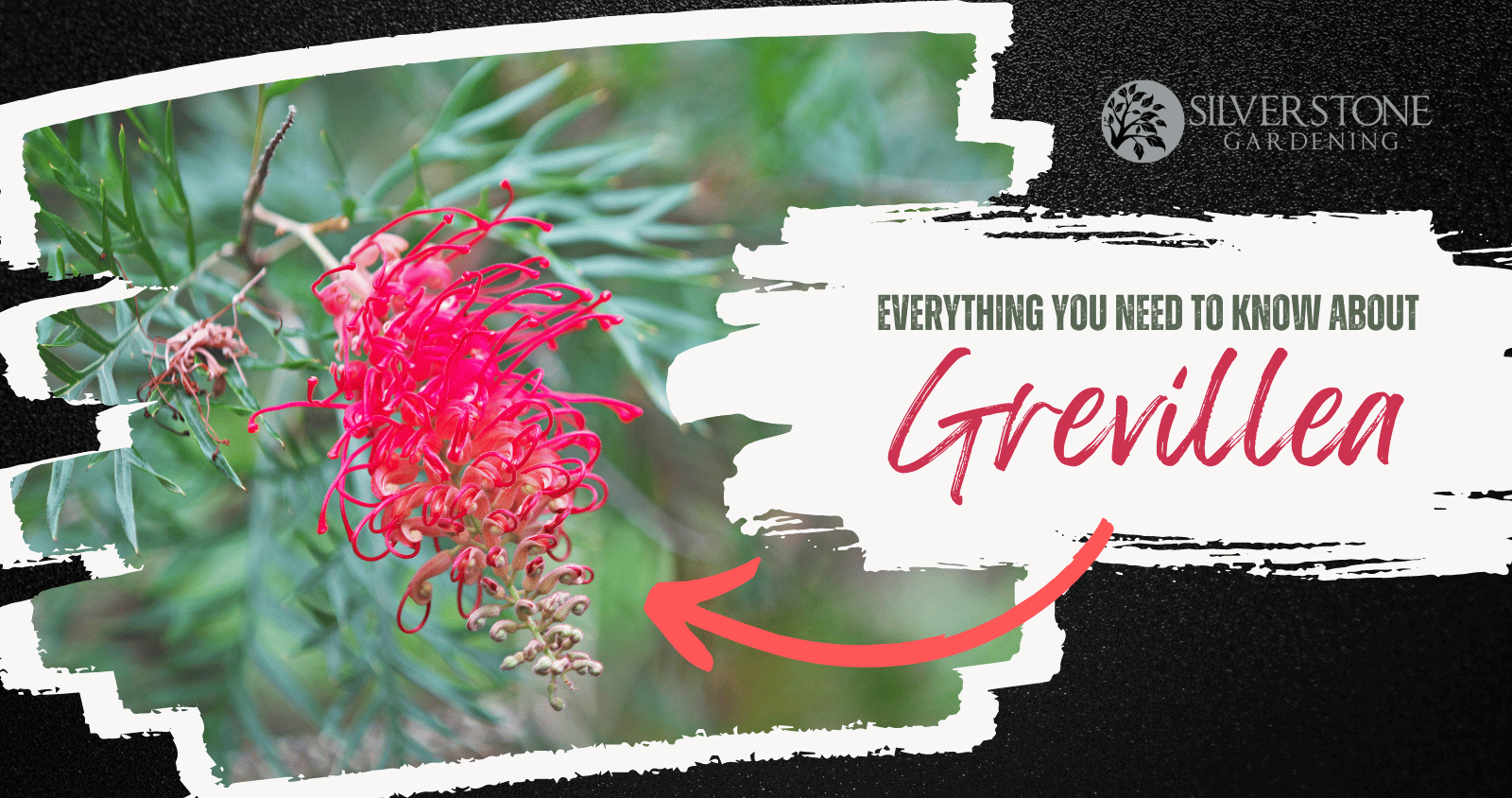
Grevilleas are a diverse group of plants native to Australia, with over 300 species known to exist. They are part of the Proteaceae family, which also includes plants such as banksias and waratahs.
The majority of grevillea species are native to Australia, with a small number found in New Guinea and Indonesia. They can be found in a variety of habitats, including forests, woodlands, and scrublands. They are known for their attractive and colourful flowers, which can range in colour from white and cream to pink, orange, yellow and red.
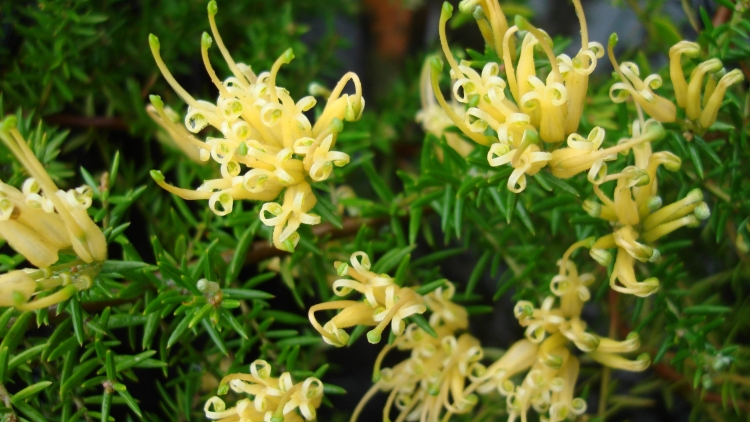
Grevilleas are a popular plant in Australia for a number of reasons. One of the main reasons is their hardiness and adaptability to different soil and weather conditions. They are also low maintenance and can be grown in a variety of different garden styles, from traditional cottage gardens to modern, minimalist landscapes.
Another reason for their popularity is their ability to attract wildlife to gardens, such as nectar-feeding birds and insects. Many species of grevillea have large, showy flowers that are particularly attractive to honeyeaters and other nectar-feeding birds. They also provide food and shelter for insects, such as butterflies and bees.
In addition, Grevillea are also popular for their long flowering period. Some species will flower for months on end, providing a constant source of colour and interest in the garden.

What soil, sun and weather conditions do Grevilleas like?
Grevilleas are generally adaptable to a wide range of soil and weather conditions. They prefer well-draining soils and can tolerate a range of pH levels, from acidic to alkaline. They can also tolerate a range of temperatures, from cool to warm, but may not perform well in areas with prolonged frost.
Most Grevillea species prefer full sun to partial shade, although some species can tolerate more shade. In general, the more sun a grevillea receives, the more flowers it will produce. They also need regular watering and thrive in a Mediterranean climate with mild winters and hot summers which is why Grevilleas thrive in Perth, WA.
It’s worth noting that different species and cultivars of grevillea may have different preferences, so it’s important to research the specific needs of the plant you plan to grow. In general, they need to be protected from cold winds and frost, and some are drought tolerant, but others are not.
Three great varieties of Grevillea
Grevillea ‘Superb’
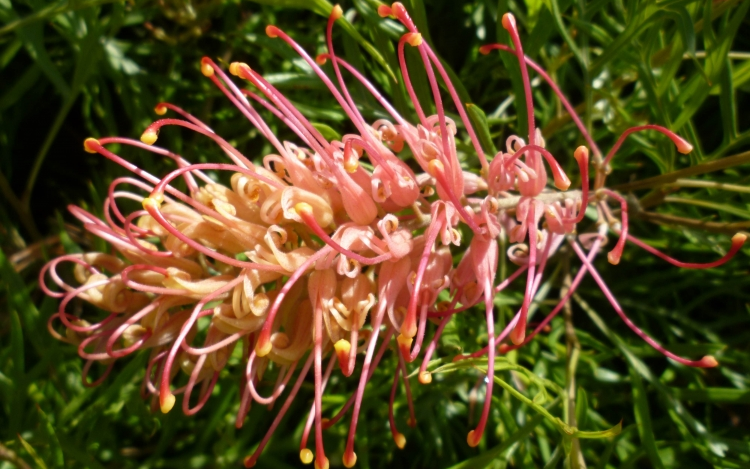
Grevillea ‘Superb’ is a cultivar of the popular Australian native plant, Grevillea. It is a large shrub or small tree that can grow around 2 meters tall and 2 meters wide. It has a dense, upright habit and is covered in large, bright pink and orange flowers that are highly attractive to nectar-feeding birds.
This cultivar prefers full sun to partial shade and well-draining soils, it can tolerate a wide range of pH levels, but thrives in soils that are slightly acidic. It is also drought tolerant and frost tolerant, making it a great choice for gardens in dry or cool climates.
Grevillea ‘Lillane’
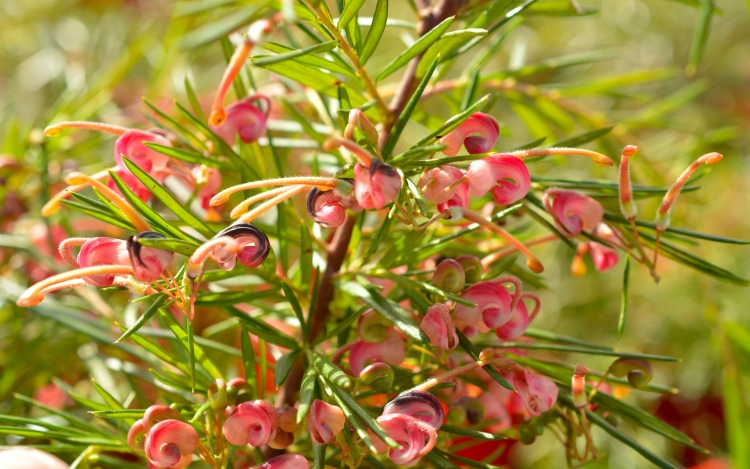
Grevillea ‘Lillane’ is a species of the popular Australian native plant, Grevillea. It is a small to medium-sized shrub that typically grows to around 1 meters tall and 1.5 meters wide. It has a dense leaves with weeping branches and is covered in dainty pink flowers that are highly attractive to nectar-feeding birds.
This species prefers full sun to partial shade and well-draining soils, it can tolerate a wide range of pH levels, but thrives in soils that are slightly acidic. It is also drought tolerant and frost tolerant, making it a great choice for gardens in dry or cool climates.
The foliage of Grevillea Lillane is needle-like, and it’s a vibrant green. It’s a hardy plant that can tolerate heavy pruning and shaping, making it an ideal choice for an informal hedge.
Grevillea ‘Gin Gin Gem’
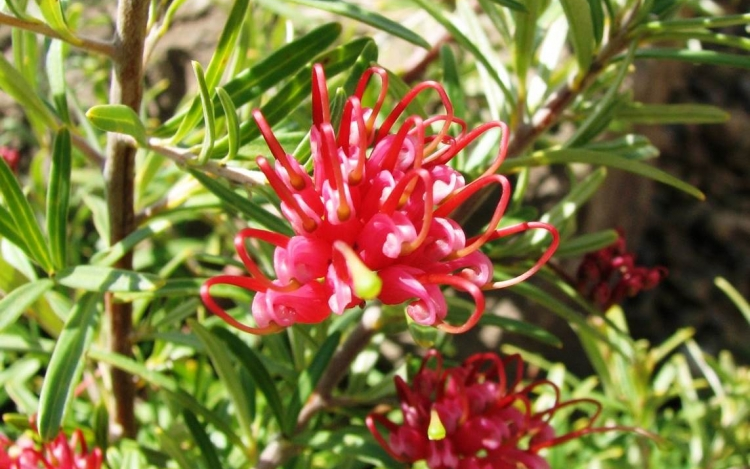
Grevillea ‘Gin Gin Gem’ is a wide spreading ground cover with beautiful red flowers that appear year round. It grows 30cm high and 2 meters wide and its flowers, like other grevilleas, attract nectar feeding birds.
This cultivar prefers full sun to partial shade and well-draining soils, it can tolerate a wide range of pH levels, but thrives in soils that are slightly acidic. It is also drought tolerant and frost tolerant, making it a great choice for gardens in dry or cool climates.
How much water do grevilleas need?
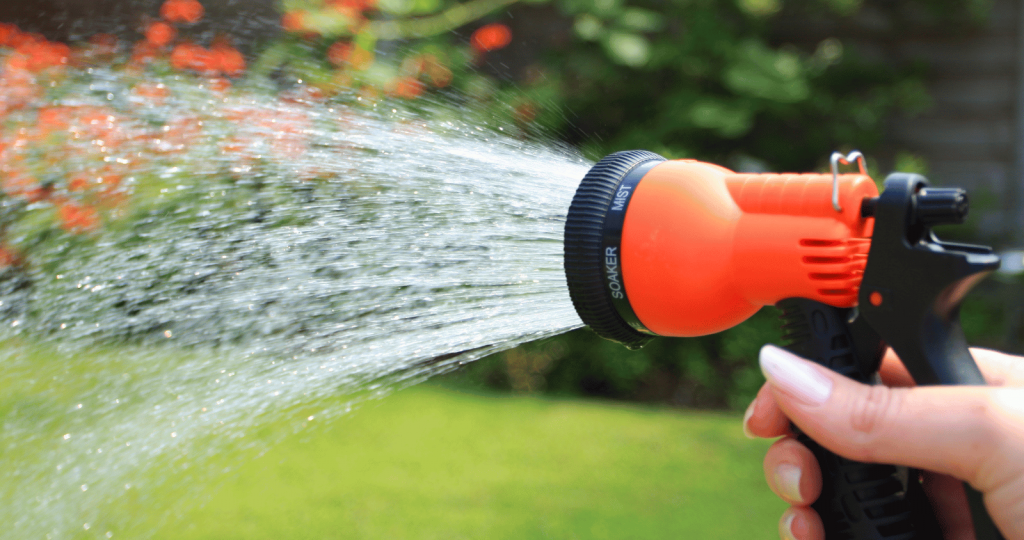
Grevilleas are generally drought-tolerant plants that do not require a lot of water. They are well adapted to the dry conditions of their native Australia, and can survive with minimal to no irrigation once established. However, they will perform better and produce more flowers with regular watering.
Young or newly planted grevilleas will need more water than established plants. They should be watered deeply and regularly for the first few months after planting to help them establish a strong root system. Once established, they can usually survive on natural rainfall alone.
In general, grevilleas should be watered deeply once a week during the growing season, and less frequently during the dormant season. They can tolerate short periods of dryness, but prolonged dryness can cause the leaves to wilt and the flowers to drop.
It’s also worth noting that different species and cultivars of grevillea may have different water requirements. Some are drought-tolerant and require minimal watering, while others may require more consistent moisture. It is always a good idea to research the specific needs of the plant you plan to grow.
Can grevilleas get too much water?
Yes, over watering Grevilleas can lead to root rot and other fungal diseases. Once established Grevilleas only need minimal water, once a week during the growing season is usually enough.
Should Grevilleas be pruned?
Grevilleas can benefit from pruning, but it’s not always necessary. Pruning can help to promote bushier growth, increase flower production, and maintain the desired shape of the plant.
If you want to promote bushier growth and increase flower production, it’s best to prune after the plant has finished flowering. This will encourage the growth of new shoots, which will produce flowers the following season.
When pruning, it is best to remove any dead, diseased, or damaged wood, as well as any crossing or overcrowded branches. It is also a good idea to remove any old, woody growth that is no longer producing flowers.
It’s also worth noting that different species and cultivars of grevillea may have different pruning requirements. Some may require minimal pruning, while others may need more frequent pruning to maintain a desired shape. It’s always a good idea to research the specific pruning needs of the plant you plan to grow.
How often do Grevilleas need pruning?
The frequency of pruning needed for grevilleas will depend on:
1. The specific species or cultivar, and
2. The purpose of the pruning.
If the goal is to create a dense hedge or maintain a certain shape or size, it may be necessary to prune grevillea every 4-8 weeks. This can be done as needed, with hedge trimmers, or secateurs depending on the specific plant. (If you are looking for some high-quality secateurs, here are two great options depending on your budget: option 1 and option 2.)
If the goal is to maintain a natural shape, but also promote bushier growth and increase flower production, it’s best to prune grevillea after the plant has finished flowering. This will encourage the growth of new shoots, which will produce flowers the following season. This can be done once a year, usually in late winter or early spring.
It’s important to note that over-pruning can be detrimental to the plant, so it’s best to remove only as much as necessary. Also, be careful not to remove too much of the old wood as it can reduce the flowering of the plant.
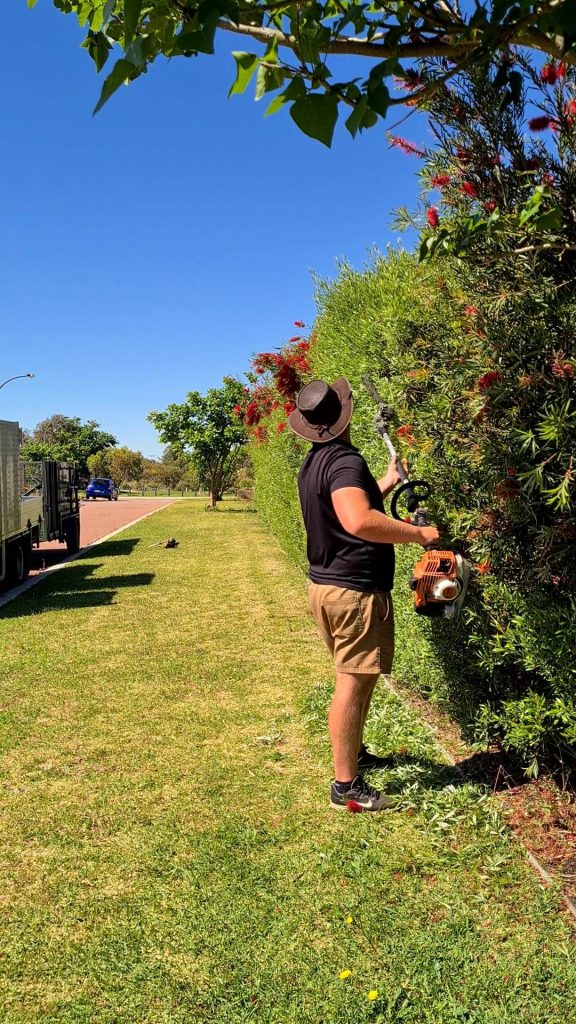
When is the best time to prune Grevillea?
If your goal is to create a hedge or maintain a specific shape then pruning every 4-8 week, as needed is required.
If you simply want to encourage a healthier plant, denser growth and more flowers then an annual prune in late winter, after flowering is best.
You can prune dead, diseased or damaged branches any time of year.
Do Grevilleas attract birds?
Yes, grevilleas are known to attract a variety of birds. They are particularly popular with nectar-loving birds such as honeyeaters, lorikeets, and parrots. These birds are attracted to the sweet nectar produced by the flowers, which can bloom year-round in some species. The colourful and bright flowers of grevillea makes them a popular addition to bird-friendly gardens.
In addition to providing a food source, grevilleas also provide birds with shelter and nesting sites. Many species of grevillea have dense foliage, which can provide shelter and nesting sites for birds.
It’s worth noting that different species and cultivars of grevillea may have different flowering and fruiting times, and this can affect the amount of bird activity that they attract. Some species, like Grevillea ‘Gin Gin Gem’ are known to flower continuously throughout the year, providing a constant food source for birds, while others, like Grevillea ‘Lillane; have a more seasonal flowering pattern.
What pests are common with Grevillea?
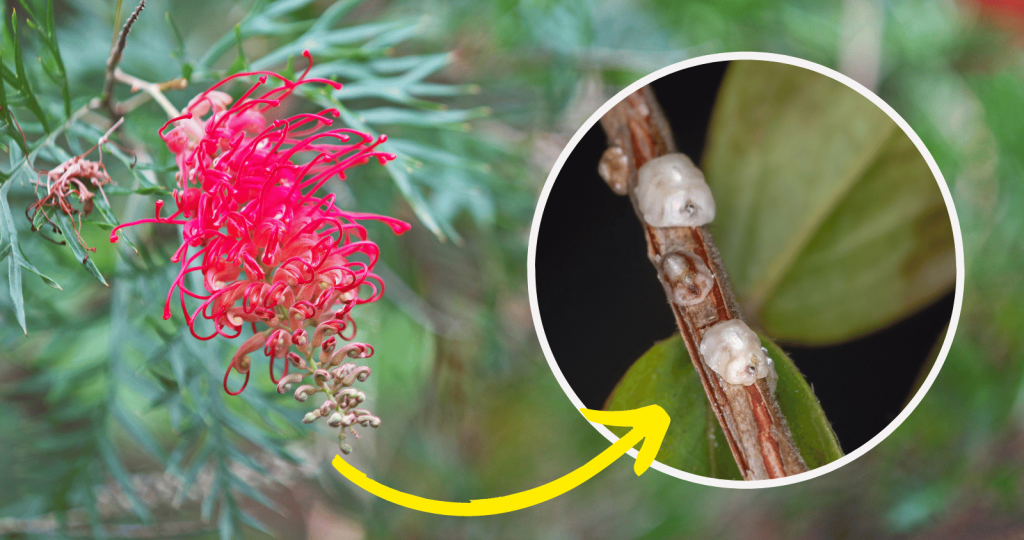
Grevilleas are generally hardy plants that are not often affected by pests. However, they can be prone to a few common problems. Some of the pests that can affect grevilleas include:
- Scale insects: These pests can cause damage to the foliage and twigs of grevilleas. They suck the sap from the plant and can cause yellowing and wilting of the leaves.
- Mealybugs: These pests can also cause damage to the foliage and twigs of grevilleas. They suck the sap from the plant and can cause yellowing and wilting of the leaves, as well as a sticky residue on the foliage.
- Caterpillars: Some species of caterpillars, such as the Grevillea borer and the Grevillea looper can cause damage to the foliage and branches of grevilleas.
In general, most pests can be controlled with regular monitoring and appropriate treatment. If you notice any signs of pest infestation, it’s best to take action as soon as possible to prevent the problem from worsening.

What diseases are common with grevilleas?
Grevilleas are generally hardy plants that are not often affected by diseases. However, they can be prone to a few common problems. Some of the diseases that can affect grevilleas include:
- Root rot: This is a common disease that can affect grevilleas. This is common in poorly draining soil. It is caused by a soil-borne fungus that attacks the roots of the plant, causing them to rot. Symptoms of this disease include wilting, yellowing of the leaves, and stunted growth.
- Powdery mildew: This is a fungal disease that can cause a white powdery coating on the leaves and stems of grevilleas. It can cause leaf curl, distorted growth, and reduced flower production. (Here is an organic fungicide that will help with Powdery Mildew and Black Spot.)
- Cinnamon fungus, is a fungal disease that is know to kill Grevillea. It is common in Grevilleas grown in poor draining soil. Symptoms include orange or reddish-brown streaks under the plant’s bark and wilting foliage that turn yellow, red, or purplish.
- Leaf Spot / Leaf Blight: These are fungal disease common in Grevilleas grown in humid areas. Symptoms may be yellowing leaves with irregular grey, black or brown spots or leaves that turn light brown or bronze and eventually grey.
In general, most diseases can be controlled with proper care and maintenance. This includes providing the plant with well-draining soil, proper irrigation, and avoiding overcrowding and over-watering. Also, it’s best to prevent the spread of disease by removing and destroying any infected plant material.
If you do get a fungal disease in your Grevillea you will be able to treat it with an appropriate fungicide. However, the cause of the issue, for example poor draining soil, should also be fixed to prevent the disease from returning.
How to fertilise grevillea
It is very important to be careful when fertilising Grevilleas as too much phosphorus can kill Grevilleas. When fertilising choose a slow-release fertilizer specifically formulated for Australian native plants, that is low in phosphorus like this fertiliser here.

It’s best to apply fertilizer in late winter or early spring, before the new growth begins. This will ensure that the plant has the necessary nutrients to produce strong, healthy growth and a profusion of flowers. Follow the instructions on the fertilizer package for the appropriate application rate.
In addition to fertilizing, it’s also important to mulch around the base of the plant to help retain moisture and keep the roots cool. Use an organic mulch, such as shredded bark or wood chips, which will break down over time and add nutrients to the soil.
It’s worth noting that different species and cultivars of grevillea may have different fertilization requirements. Some may require minimal fertilization, while others may need more frequent fertilization to maintain optimal growth and flower production. It’s always a good idea to research the specific fertilization needs of the plant you plan to grow.
Are grevilleas fast growing?
Yes, grevilleas a generally considered fast growing. However, the rate of growth for grevilleas can vary depending on the specific species or cultivar, with some varieties being considered fast-growing and others being considered slow-growing. Factors such as sunlight, soil conditions, and water availability can also affect the growth rate of grevilleas.

How to make grevilleas bushy?
There are several ways to make grevilleas bushier:
- Pruning: Pruning is one of the most effective ways to promote bushier growth in grevilleas. After the plant has finished flowering, it’s best to prune it to encourage the growth of new shoots. This can be done by cutting back the plant by about a third of its total height. Repeat this process annually or as needed.
- Pinching: Pinching back the tips of new growth can also promote bushier growth in grevilleas. This can be done by pinching back the tips of new growth with your fingers or with a pair of scissors. This will encourage the growth of multiple branches and a bushier plant.
- Fertilizing: Fertilizing grevilleas with a slow-release fertilizer specifically formulated for Australian native plants can promote bushier growth. It’s best to apply fertilizer in late winter or early spring, before the new growth begins.
- Good soil and irrigation: Grevilleas prefer well-draining soil, and consistent irrigation can help them to establish a strong root system. Overwatering can lead to root rot and slow growth.
- Avoid overcrowding: Overcrowding can lead to poor air circulation and reduced growth. It’s important to give grevilleas enough space to grow and spread out.
How to encourage more flowers on your gravillea
There are several ways to encourage more flowers on your grevillea:
- Pruning: Pruning is one of the most effective ways to increase flower production in grevilleas. After the plant has finished flowering, it’s best to prune it to encourage the growth of new shoots. This can be done by cutting back the plant by about a third of its total height. Repeat this process annually or as needed.
- Fertilizing: Fertilizing grevilleas with a slow-release fertilizer specifically formulated for Australian native plants can promote flower production. It’s best to apply fertilizer in late winter or early spring, before the new growth begins.
- Good soil and irrigation: grevilleas prefer well-draining soil, and consistent irrigation can help them to establish a strong root system. Overwatering can lead to root rot and slow growth.
- Provide Full sun: Most grevillea species prefer a full sun position, although some can tolerate partial shade. They flower better with more sunlight.
- Deadheading: Regular deadheading, or removing spent flowers, can encourage more blooms.
- Avoid overcrowding: Overcrowding can lead to poor air circulation and reduced growth. It’s important to give grevilleas enough space to grow and spread out.
Can you propagate grevilleas from cuttings?
Yes, it is possible to propagate grevilleas from cuttings. This is a relatively easy and inexpensive method of propagating grevilleas.
The best time to take cuttings is in spring or summer when the plant is actively growing. Take semi-hardwood cuttings, which are about 5-7cm long and have a few leaves on them. Remove the lower leaves and dip the cuttings in rooting hormone. (We recommend using this rooting hormone to help root formation in your cuttings.) Plant the cuttings in a well-draining propagating mix and cover with a plastic bag to create a humid environment.
Make sure to keep the soil moist but not wet and place the cuttings in a warm and bright spot but out of direct sunlight. It can take 4-8 weeks for roots to develop, and then you can transplant the new plants into their own pots or in the garden.
It’s worth noting that different species and cultivars of grevillea may have different rooting requirements, so it’s always a good idea to research the specific needs of the plant you plan to propagate.
Do grevilleas have invasive roots?
The root systems of grevilleas vary depending on the species or cultivar. Some grevillea species have relatively shallow, non-invasive root systems, while others have deep, invasive root systems.
For example, Grevillea rosmarinifolia, has a relatively shallow root system and is considered to be non-invasive, making it a suitable choice for garden beds or rockeries.
On the other hand, some species of Grevillea such as Grevillea robusta, has a deep and invasive root system. This species can grow up to 30 meters tall, and its root system can extend beyond the canopy, making it less suitable for small gardens or planting near buildings or other structures.
It’s worth noting that grevilleas are drought tolerant plants, and their roots are designed to seek out water, so it’s important to provide well-draining soil and to not over-water the plant.
It’s also important to consider the size and growth habit of the specific grevillea species or cultivar when selecting it for planting in a garden. And to research the root system of the plant you plan to grow, to ensure it’s suitable for the space you have.

How do you make Grevilleas grow faster?
There are four ways to help your Grevillea grow faster. Proper fertilsing, pruning, sunlight and proper watering.
- Correct Fertilising: Fertilising grevilleas with a slow-release fertilizer specifically formulated for Australian native plants can promote faster growth. It’s best to apply fertilizer in late winter or early spring, before the new growth begins. Do not over fertilise, too much Phosphorus can kill grevilleas, follow the manufacturers instructions to get the best results.
- Pruning: Regular pruning can encourage bushier growth and promote faster growth. After the plant has finished flowering, it’s best to prune it to encourage the growth of new shoots.
- Sunlight: Grevilleas need sunlight to grow quickly. An overcrowded garden or heavily shaded spot will result in slow growth. It’s important to give grevilleas enough space to grow and spread out and to plant your grevillea in a location that best suits its light requirements.
- Proper irrigation: Consistent irrigation can help grevilleas establish a strong root system and promote faster growth, but it’s important not to over-water the plant, as this can lead to root rot.
It’s worth noting that different species and cultivars of grevillea may have different growth habits and may respond differently to these methods. It’s always a good idea to research the specific needs of the plant you plan to grow.

How do you rejuvenate Grevilleas?
It depends on what issue is causing the grevillea to struggle. Fungal diseases, pests, poor soil or poor conditions could all cause a grevillea to struggle
How to help a wilting grevillea: This is most likely due to a lack of water. Test to see if the soil around the grevilleas roots is dry. If it is dry then follow these three steps:
- Apply a liquid wetting agent to the soil to help water penetrate to the roots and water in thoroughly.
- Apply a seaweeds solution to help the plant recover from the drought stress.
- Repair or modify your irrigation to ensure that your grevillea is getting 10mm of water once a week.
If the soil around your weeping grevillea is damp then you are most likely dealing with a fungal issue.

